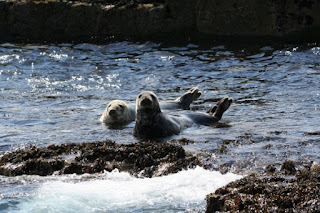The Pinniped Seal of Approval for Defying Evolution
There are three family classifications of pinnipeds, which are walruses, sea lions, and seals. These oceanic carnivores account for one quarter of all carnivores on Earth, and these eat a variety of marine animals. Pinnipeds have a variety of movements in water and on land.
Believers in universal common descent evolution say that the three families, like whales, had land ancestors that did an about-face and evolved some more to live in the sea. Other evolutionists disagree, saying that genetics does not support a single ancestor.
 |
| Atlantic Grey Seals, RGBStock / Elvis Santana |
 |
| Question Evolution Day is February 12 |
Pinnipeds are marine creatures, with front and rear flippers. You’ve probably seen a seal, one of the three groups of living pinnipeds, swimming in the water or lounging around on the sand at the zoo or an aquarium. They are all air-breathing, warm-blooded animals that suckle their young (mammals). Their name is from two Latin words, pinna (wing, fin) and pedis (foot). Their paddle-like feet allow them to swim with agility and ease in the water, and their fat, blubbery bodies keep them warm in their generally cold environment.
To read the rest of this very interesting article, swim over to "Pinnipeds — Fascinating creatures that thwart evolution."